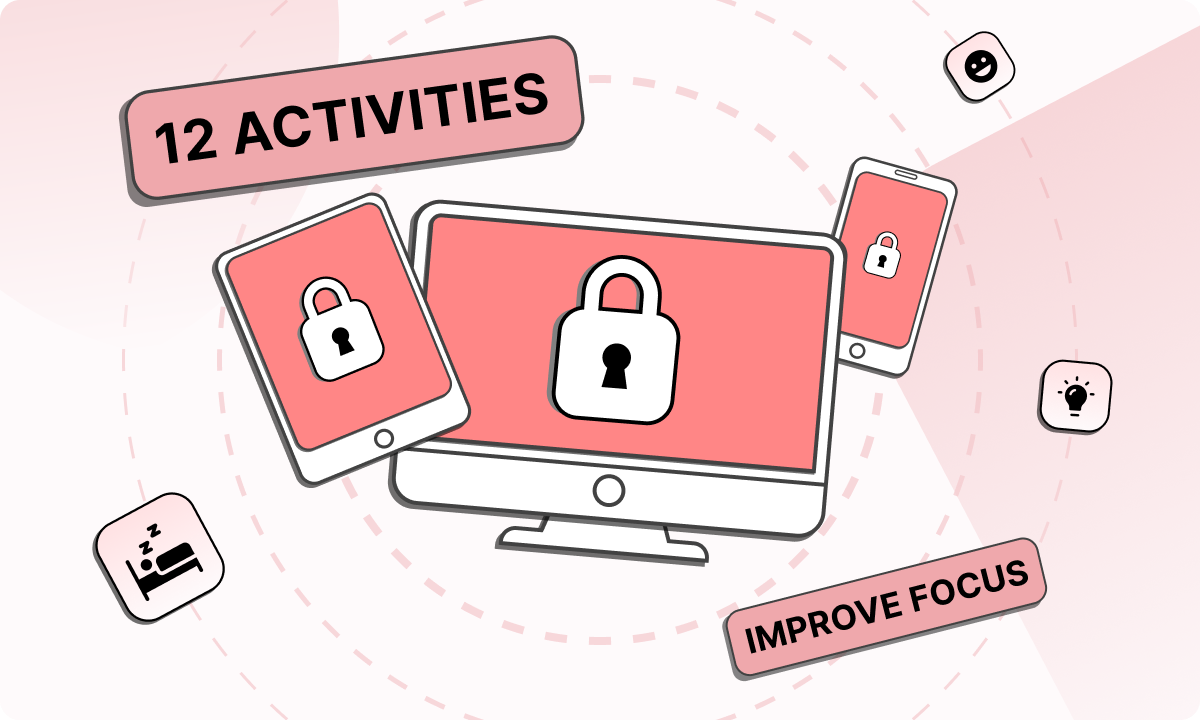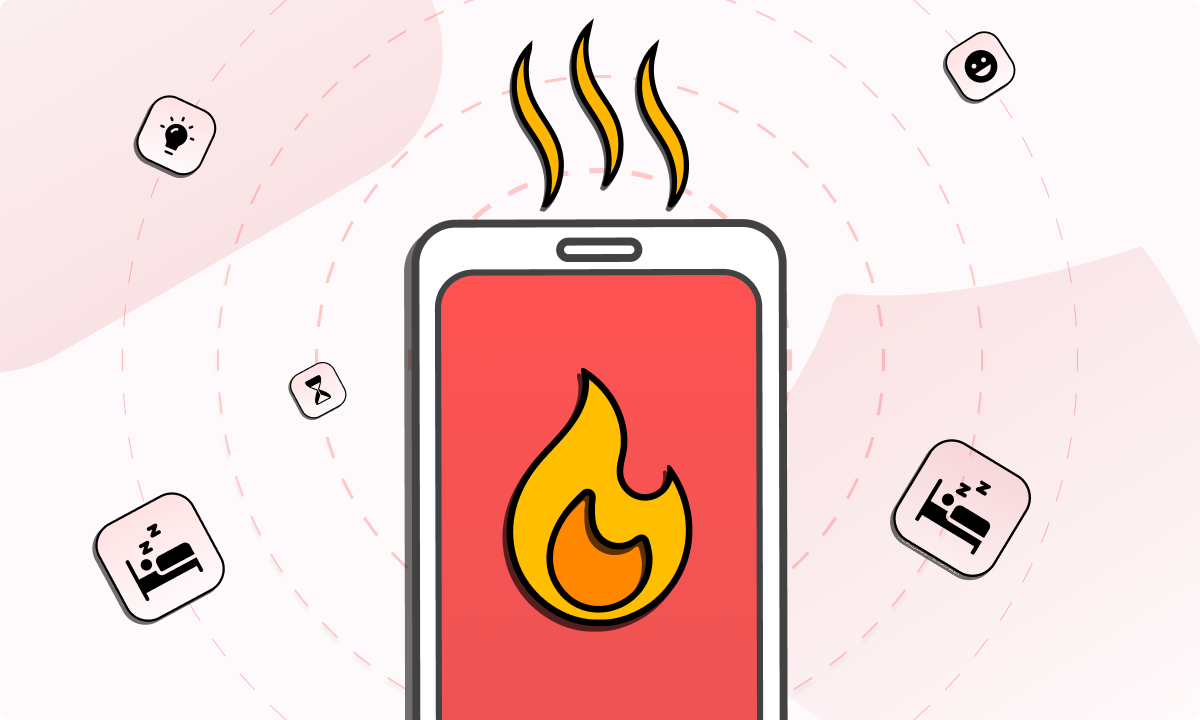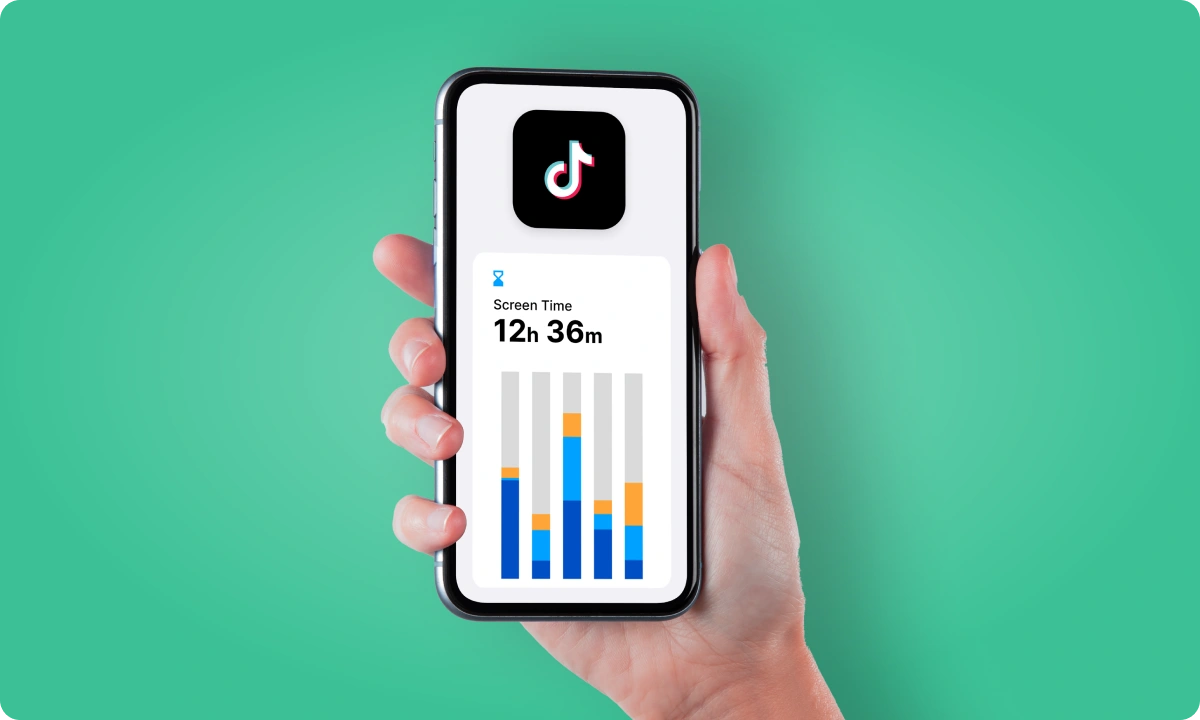Screens are everywhere. Meetings, messages, memes, more messages. It adds up fast. Going screen-free isn’t some anti-tech manifesto, but more of getting some breathing room.
Maybe that’s one hour after dinner without your phone. Or a weekend afternoon where the tablet stays in the drawer. Either way, it’s less about totally saying goodbye to those devices and more about giving your brain a timeout.
Screens demand constant input. Your attention? Always spoken for. But when you shut them off, even briefly, something shifts. You start noticing things again: your thoughts, your space, the person across the room. That mental reset is underrated.
Screen-free activities fill the gap with things that actually refill you. No buzz, no banner, no bright light pulling you back in. Just time well spent, offline.
Benefits of screen-free activities
Whether you’re just shutting down early or swapping Netflix for a quiet night with puzzles and paperbacks, screen-free activities pay off. Fast.
Here’s why pulling the plug might be the smartest thing you do all week:
1. Sharper mental focus
Screens split attention and overwork the brain. Taking regular breaks from them helps improve concentration.
People often notice it becomes easier to stay present, finish tasks, and think clearly once digital noise is removed from their environment.
2. Better sleep quality
Screen exposure in the evening can delay rest and reduce sleep depth.
When screens are replaced with quiet, low-stimulation activities, the brain settles more easily into its natural rhythm. This leads to deeper, more consistent sleep.
3. Improved social connection
Time spent away from screens naturally encourages more in-person interaction.
Regardless if it’s during meals or conversations, people tend to feel more heard and more present. These small changes help strengthen relationships over time.
4. Stronger creativity
Without passive content filling every free moment, the brain looks for new outlets.
Screen-free hours often lead to renewed interest in music, storytelling, drawing, or building. The result is a more active and imaginative state of mind.
5. Healthy child development
For children, screen-free routines support brain growth and learning. They give kids the chance to practice motor skills, problem-solving, and social interaction.
These experiences play an important part in shaping behavior and independence.
6. Lower stress and fatigue
Too much screen time is linked to overstimulation, mood swings, and even burnout.
Avoiding screens for part of the day gives the nervous system time to recover. People often report a calmer mood and fewer feelings of overwhelm.
7. More control over time
Without the pull of constant notifications or endless scrolling, it becomes easier to use time with purpose.
It’s not just particular to work, rest, or leisure. Screen-free activities help bring structure and intention back into daily life.
And guess what? These changes don’t require a full detox. Even small windows of time without screens can change how you think, feel, and function. It’s not about doing more.
12 screen-free activities to try
These are some of the best screen-free activities to add to your day, whether you’re indoors, outdoors, alone, or with others:
1. Set up BlockSite to cut the noise
Before anything else, install BlockSite. This tool helps create a clean digital boundary by letting you block distracting websites and apps.
It has features like Focus Mode to silence interruptions, scheduling tools for screen-free periods, and keyword or category blocking for one-click control.
You can also create a custom block page with reminders to stick to your goals.
With syncing across multiple devices, BlockSite helps you commit to screen-free activities without relying on willpower alone.
2. Birdwatching in your backyard or local park
Birdwatching encourages patience and quiet observation. Sit outside or near a window and take note of what birds visit.
Try identifying them by color, size, or song. It’s low effort but highly grounding.
3. Bake or cook together
Choose a recipe and involve everyone in the kitchen and it doesn’t matter whether it’s homemade pizza or baking cookies.
This is an easy way to spend quality time, especially during screen-free evening activities when you’re winding down from the day.
4. Build a puzzle or play board games
Puzzles and board games train attention span and offer a hands-on break from screens.
A strategy-based board game or a themed 1,000-piece jigsaw? Anything goes! This activity is ideal for both solo focus and family bonding.
5. Start a nature journal
Bring a notebook on a walk and write or draw what you observe. You can focus on the sound of leaves, the pattern of clouds, or the plants you pass.
This simple habit promotes mindfulness and gives you a physical record of your time outside.
6. Try candle-making or DIY crafts
Candle-making, sculpting with clay, or building a small fort from recycled boxes are perfect screen-free indoor activities. They tap into creativity and often result in something useful or decorative.
7. Practice card tricks or learn a new game
No, we’re not talking about online games here. Grab a real deck of cards and teach yourself a trick or learn a new game like Crazy Eights or Spit.
These kinds of activities are good for your mental health and can be quite a fun challenge without needing screens.
8. Paint or color
Whether you’re filling in a coloring book or experimenting on a blank canvas, this activity is calming and expressive.
No need for perfection or being a trained artist. Just a space to let your thoughts take shape.
9. Create a time capsule
Fill a small box with keepsakes, letters, or small items from your current life.
Then, pick a future date to open it. It’s a meaningful activity that helps you reflect while creating something for later.
10. Plant something
Even a small container garden or DIY terrarium can be relaxing. Choose plants you like, get your hands a little dirty, and enjoy the process of watching something grow over time.
11. Teach or learn a new skill together
Use time offline to pass on a practical skill: sewing a button, changing a bike tire, or making jam.
Teaching and learning without a screen builds connection and a sense of accomplishment.
12. Build a fort or go backyard camping
Use pillows, blankets, or a tent to create a small world of your own. Once inside, play board games, read, or tell stories.
This works great for kids and adults looking for simple, imaginative downtime.
Time away from screens is time that works for you
And we’re not even talking about saying goodbye tech for good. It’s all about taking control. Screen-free activities give your brain space to breathe and your day a little more room to move. A quiet evening without notifications. A weekend where the phone stays out of reach. It changes how you think, sleep, and reset.
Start small. A few screen-free indoor activities and your nervous system already feels less fried. Do it at night and watch your sleep improve. Your focus sharpens. You feel less wired and more present.
This is where BlockSite earns its keep. You set your boundaries once ( apps, sites, schedules), and it does all the blocking for you. Focus Mode kicks in when you need it. Device syncing keeps everything in line. Even when your willpower taps out, your setup doesn’t.
You don’t need to be perfect. You just need to make space. BlockSite helps you hold that space. Fewer taps. Fewer tabs. More time where it counts. So if you’re tired of screen fatigue, here’s your way to push back, without overthinking it.
FAQs
How can I make screen-free time enjoyable for my kids?
Start with familiar activities they already like: baking, crafts, or going outdoors. Give them input on what to do, which makes them feel involved and more open to participating. Keep a rotation of ideas ready so it doesn’t become repetitive. When kids have fun without screens, they’re more likely to want to repeat it.
What are good screen-free evening activities for winding down?
Evenings are ideal for calming, low-stimulation tasks. Reading a book, sketching, journaling, or doing a quiet puzzle can help the brain settle. Avoiding screens during this time helps prepare the body for sleep. Choose activities that require focus but not too much energy, so your evening feels restorative rather than overstimulating.
How can I manage screen-free time without feeling disconnected?
Let friends or coworkers know when you’re off devices to reduce pressure to respond instantly. Use that time for in-person interactions, reflection, or quiet activities. The goal is to be more present in your surroundings. Over time, intentional screen-free blocks start to feel freeing rather than isolating or inconvenient.
What if I keep getting tempted to check my phone?
Temptation is common, especially early on. Use a tool like BlockSite to block access to specific apps or sites. You can set passwords, schedule focus times, and even create custom redirect pages. These features add friction that helps break the automatic habit of picking up your phone without thinking.
Can screen-free activities help with anxiety?
Yes, they can. Tasks like gardening, drawing, or walking give your brain a break from online content. These activities help anchor you in the present, reduce mental clutter, and allow space for calming thoughts. Screen-free routines often lead to a more relaxed mood and lower daily stress levels.





